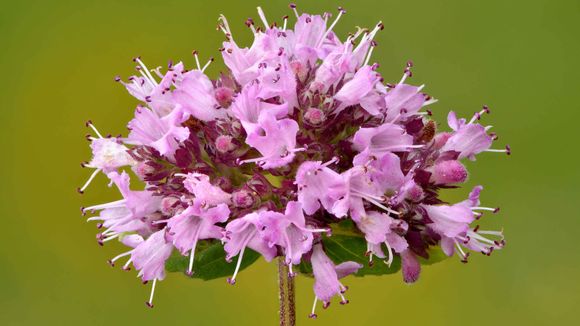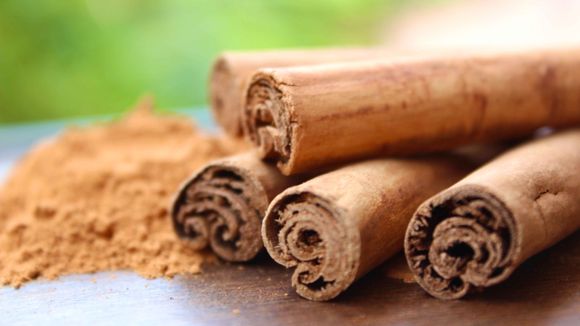Natural remedies
Tea tree oil (Melaleuca alternifolia)
Tea tree oil is derived from the leaves of the Australian tea tree, Melaleuca alternifolia. This plant is a member of the Myrtaceae family and is native to Australia. Tea tree oil has been widely studied for its antifungal properties and is considered a potent alternative for treating onychomycosis (1).
Recipe for home preparation
Mix a few drops of tea tree oil with a carrier oil, such as coconut or almond oil, and apply it to the affected nails twice daily.
Scientific reference
(1) Hammer, K. A., Carson, C. F., & Riley, T. V. (2003). Antifungal activity of the components of Melaleuca alternifolia (tea tree) oil. Journal of Applied Microbiology, 95(4), 853-860.

Oregano oil (Origanum vulgare)
Oregano oil is derived from the leaves and flowers of the oregano plant, Origanum vulgare. This plant belongs to the Lamiaceae family and is native to the Mediterranean region. Oregano oil contains a compound called carvacrol, which has been shown to possess strong antifungal properties against nail fungus (2).
Recipe for home preparation
Mix 2-3 drops of oregano oil with a carrier oil and apply to the affected nails twice daily.
Scientific reference
(2) Nostro, A., Sudano Roccaro, A., Bisignano, G., Marino, A., Cannatelli, M. A., Pizzimenti, F. C., ... & Blanco, A. R. (2007). Effects of oregano, carvacrol and thymol on Staphylococcus aureus and Staphylococcus epidermidis biofilms. Journal of Medical Microbiology, 56(4), 519-523.
Garlic (Allium sativum)
Garlic, Allium sativum, is a member of the Alliaceae family and has been used for centuries for its medicinal properties. Recent studies have shown that garlic extracts exhibit potent antifungal activity against onychomycosis (3).
Recipe for home preparation
Crush a few cloves of garlic and apply the paste directly onto the affected nails. Alternatively, you can also dilute garlic oil with a carrier oil and apply it to the nails.
Scientific reference
(3) Lemar, K. M., Turner, M. P., & Lloyd, D. (2002). Garlic (Allium sativum) as an anti-Candida agent: a comparison of the efficacy of fresh garlic and freeze-dried extracts. Journal of Applied Microbiology, 93(3), 398-405.

Photo by Rens D on Unsplash
Cinnamon oil (Cinnamomum zeylanicum)
Cinnamon oil is derived from the bark of the cinnamon tree, Cinnamomum zeylanicum, which belongs to the Lauraceae family. Studies have shown that cinnamon oil has antifungal activity against nail fungus (4).
Recipe for home preparation
Mix a few drops of cinnamon oil with a carrier oil, such as jojoba or almond oil, and apply it to the affected nails twice daily.
Scientific reference
(4) Quale, J. M., Landman, D., Zaman, M. M., Burney, S., & Sathe, S. S. (1996). In vitro activity of Cinnamomum zeylanicum against azole resistant and sensitive Candida species and a pilot study of cinnamon for oral candidiasis. The American journal of Chinese medicine, 24(02), 103-109.
Questions and Answers
Q: How long does it take to see improvement in my nails after using these herbal remedies?
A: The duration for visible improvement varies from person to person, depending on the severity of the infection and individual response to the treatment. However, it's important to be patient and consistent with the application of these herbal remedies. You may start to see improvement in a few weeks, but it can take several months for the nails to fully recover.
Q: Can I combine multiple herbal remedies for better results?
A: Yes, you can combine different herbal remedies to enhance their antifungal properties. For example, you can mix tea tree oil with oregano oil or garlic oil with cinnamon oil. Always make sure to dilute the essential oils with a carrier oil before applying to the affected nails.
Q: Are there any side effects to using these herbal remedies?
A: Herbal remedies are generally considered safe when used as directed. However, some individuals may experience skin irritation or allergic reactions, especially when using undiluted essential oils. It's important to perform a patch test on a small area of skin before applying any remedy to the affected nails. If you experience any adverse effects, discontinue use and consult a healthcare professional.
Q: Can I use these remedies for toenail fungus as well?
A: Yes, these herbal remedies can be used for both fingernail and toenail fungus. The application method and frequency remain the same for both types of nail fungus.
Referrals
(1) Hammer, K. A., Carson, C. F., & Riley, T. V. (2003). Antifungal activity of the components of Melaleuca alternifolia (tea tree) oil. Journal of Applied Microbiology, 95(4), 853-860.
(2) Nostro, A., Sudano Roccaro, A., Bisignano, G., Marino, A., Cannatelli, M. A., Pizzimenti, F. C., ... & Blanco, A. R. (2007). Effects of oregano, carvacrol and thymol on Staphylococcus aureus and Staphylococcus epidermidis biofilms. Journal of Medical Microbiology, 56(4), 519-523.
(3) Lemar, K. M., Turner, M. P., & Lloyd, D. (2002). Garlic (Allium sativum) as an anti-Candida agent: a comparison of the efficacy of fresh garlic and freeze-dried extracts. Journal of Applied Microbiology, 93(3), 398-405.
(4) Quale, J. M., Landman, D., Zaman, M. M., Burney, S., & Sathe, S. S. (1996). In vitro activity of Cinnamomum zeylanicum against azole resistant and sensitive Candida species and a pilot study of cinnamon for oral candidiasis. The American journal of Chinese medicine, 24(02), 103-109.









